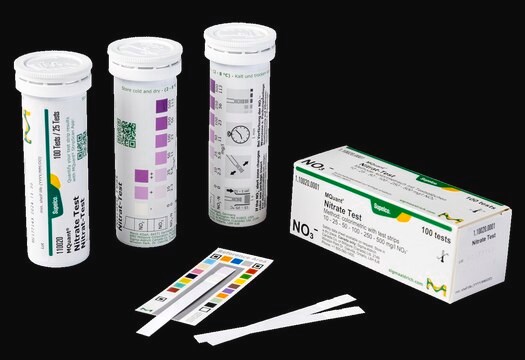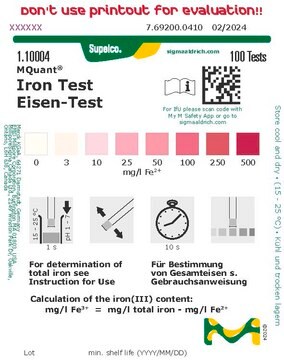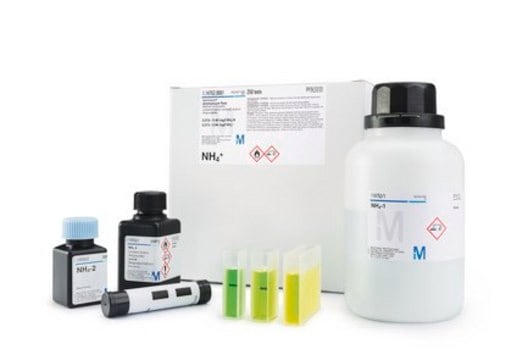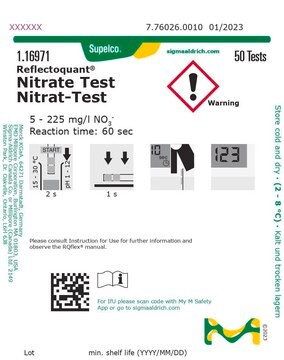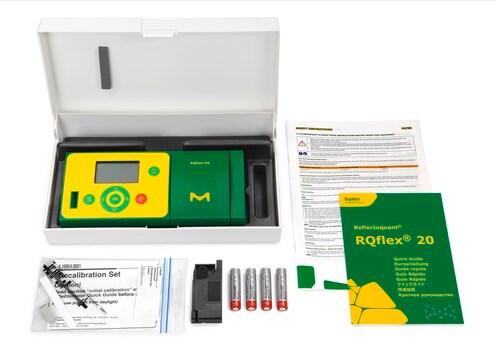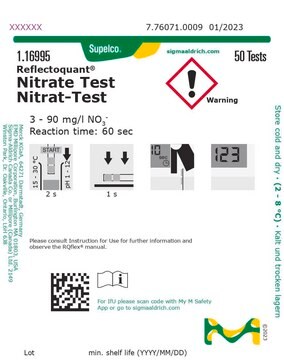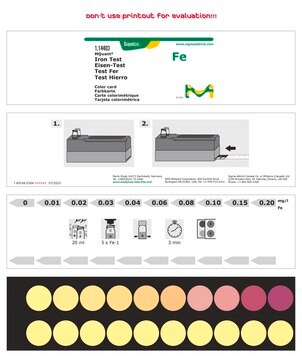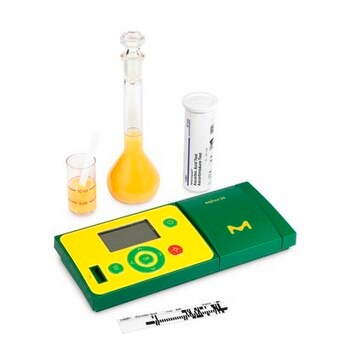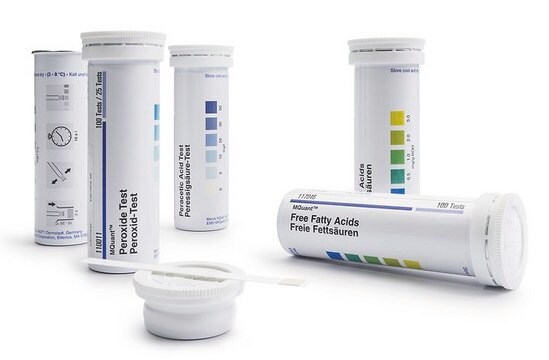1.16982
Iron Test Strips, reflectometric
0.5-20 mg/L (Fe²⁺), REFLECTOQUANT®, for use with RQflex® 20
Sinónimos:
Iron chemical test strips, Iron test strip for instrument reader
About This Item
Productos recomendados
Nombre del producto
Iron Test, reflectometric, 0.5-20 mg/L (Fe2+), for use with REFLECTOQUANT®
descripción
quantitative
Nivel de calidad
analitos específicos
iron
intervalo de medida
0.5-20 mg/L (Fe2+)
compatibilidad
RQflex® 20
for use with REFLECTOQUANT®
método de detección
reflectometric
temp. de almacenamiento
15-25°C
Descripción general
Aplicación
- Capillary electrophoresis method for speciation of iron (II) and iron (III) in pharmaceuticals by dual precapillary complexation.: This research presents a capillary electrophoresis method for distinguishing between iron (II) and iron (III) in pharmaceutical products, using iron tests to ensure accurate speciation and quality control (Gotti et al., 2015).
- PAH concentration gradients and fluxes through sand cap test cells installed in situ over river sediments containing coal tar.: The study investigates the concentration gradients and fluxes of polycyclic aromatic hydrocarbons (PAHs) through sand cap test cells, utilizing iron tests to analyze environmental contamination and remediation effectiveness (Kim et al., 2013).
- Serum iron parameters in cirrhosis and chronic hepatitis: detailed description.: This research provides a detailed analysis of serum iron parameters in patients with cirrhosis and chronic hepatitis, emphasizing the diagnostic importance of iron tests in liver diseases (Bkaşik et al., 2011).
- Hepcidin response to acute iron intake and chronic iron loading in dysmetabolic iron overload syndrome.: The study examines the hepcidin response to iron intake in individuals with dysmetabolic iron overload syndrome, highlighting the role of iron tests in understanding iron metabolism and regulatory mechanisms (Trombini et al., 2011).
Ligadura / enlace
Nota de análisis
Assay
- standard 1:
0.8 - 1.2 mg/l
- standard 2: 4.5 - 5.5 mg/l
- standard 3: 16.0 - 20.0 mg/l
Información legal
Código de clase de almacenamiento
11 - Combustible Solids
Clase de riesgo para el agua (WGK)
WGK 1
Certificados de análisis (COA)
Busque Certificados de análisis (COA) introduciendo el número de lote del producto. Los números de lote se encuentran en la etiqueta del producto después de las palabras «Lot» o «Batch»
¿Ya tiene este producto?
Encuentre la documentación para los productos que ha comprado recientemente en la Biblioteca de documentos.
Nuestro equipo de científicos tiene experiencia en todas las áreas de investigación: Ciencias de la vida, Ciencia de los materiales, Síntesis química, Cromatografía, Analítica y muchas otras.
Póngase en contacto con el Servicio técnico